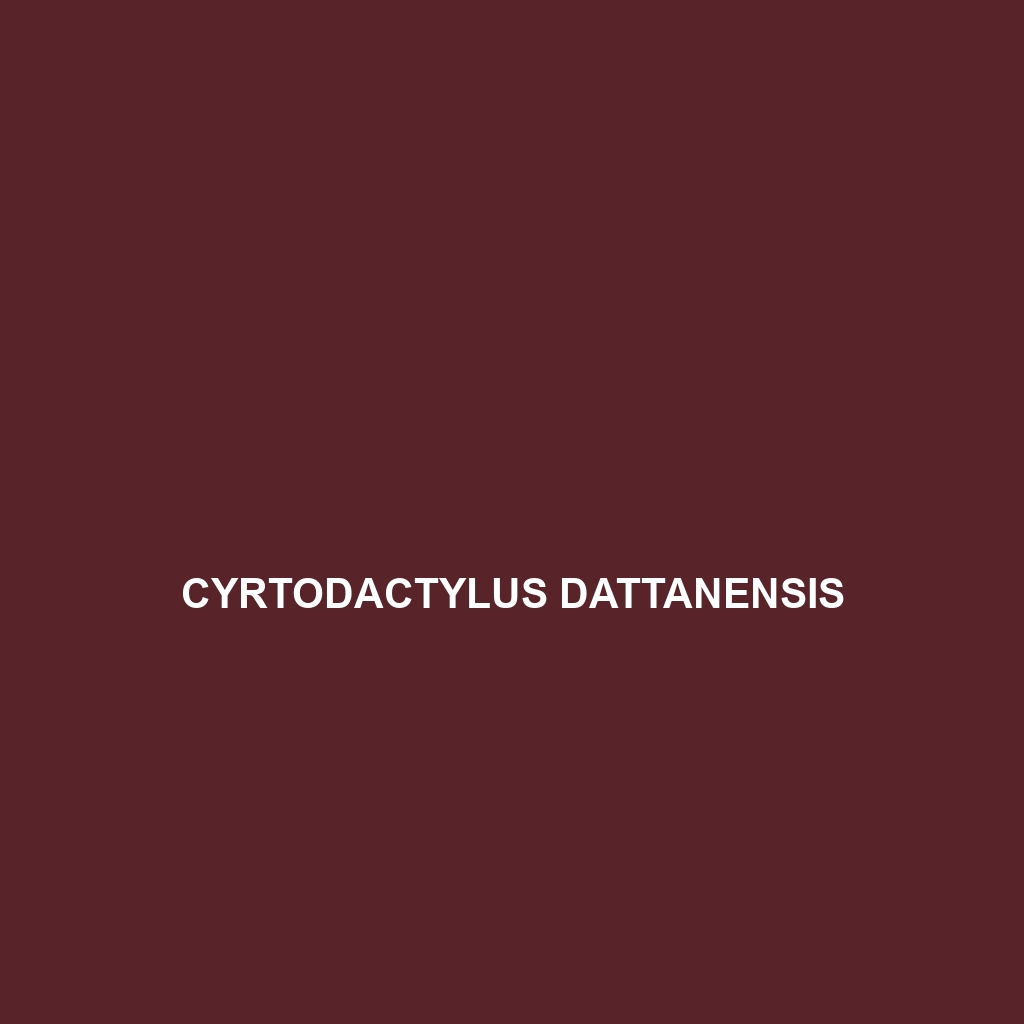Cyrtodactylus dati – Species Overview
Common Name: Cyrtodactylus dati
Scientific Name: Cyrtodactylus dati
Habitat
Cyrtodactylus dati is primarily found in the tropical forests of Southeast Asia, particularly in areas rich in limestone formations. Its geographic distribution includes regions of Malaysia and Indonesia where humid conditions and dense vegetation create an ideal microhabitat for this species. These gecko lizards thrive in rocky crevices and leaf litter, showcasing their affinity for both arboreal and terrestrial environments.
Physical Characteristics
This species typically measures between 10 to 15 cm in length. Cyrtodactylus dati exhibits a distinctive color pattern, with a base color ranging from light brown to dark gray, often adorned with darker blotches or stripes along its body. Its flattened body shape and large, round eyes are notable features that set it apart from similar species. The presence of adhesive toe pads enhances its climbing abilities, allowing it to navigate both vertical surfaces and horizontal terrains with ease.
Behavior
Cyrtodactylus dati is predominantly nocturnal, showcasing a range of behaviors that align with its active hours. During the night, it can be seen foraging for food and engaging in territorial displays, particularly among males. The gecko relies on camouflage to evade predators, often remaining motionless against the rocky backdrop. This species is also known for its vocalizations, which play a role in communication during mating season.
Diet
The diet of Cyrtodactylus dati primarily consists of small insects, including crickets, moths, and beetles. As an insectivorous species, it uses its keen eyesight and agility to catch prey. Its feeding habits can influence local insect populations, making it an important predator within its ecosystem.
Reproduction
Cyrtodactylus dati exhibits oviparous reproduction, typically breeding during the humid months. Females lay one or two eggs per clutch in sheltered locations, like under leaf litter or inside crevices. After approximately two months, hatchlings emerge, and they are independent from birth. Parental care is not observed in this species, emphasizing the survival abilities of the young geckos.
Conservation Status
The conservation status of Cyrtodactylus dati is currently classified as vulnerable due to habitat loss from deforestation and human encroachment. Conservation efforts are crucial to protect its natural habitat and ensure the survival of this unique species.
Interesting Facts
Cyrtodactylus dati is known for its exceptional ability to adapt to various environmental conditions. Unlike many other gecko species, it exhibits a remarkable resistance to temperature fluctuations, which aids in its survival during extreme weather conditions. Additionally, it can regenerate its tail similar to other lizards, a feature that aids in evasion from predators.
Role in Ecosystem
Cyrtodactylus dati plays a significant role in its ecosystem as both a predator and prey. By regulating insect populations, it aids in maintaining ecological balance. Furthermore, it serves as a food source for larger predators, thus contributing to the food web dynamics in its habitat.
